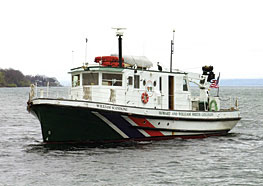Facilities
ROSENBERG HALL
The Council on Undergraduate Research has said that Rosenberg Hall, home to the HWS biology department, is “among the best – if not the best-designed undergraduate science teaching-learning, research facilities we have ever seen.”
The buildings’ 15 instructional laboratories, 12 student-faculty research laboratories, 3 instrument rooms, a sterile culture room, chemical storage rooms, greenhouse, and computer labs are light-filled and neatly appointed with soft woods, glass and polished steel.
The department also has state-of-the-art, research-grade instrumentation for teaching and research. A partial list includes DNA thermal cycler, UV band scanner, spectrophotometers, environmental growth chambers, patch clamp equipment, CO2 incubators, O2 and CO2 analyzers, SEM, TEM, Zeiss inverted flourscence microscope, Olympus phase contrast microscopes, DNA sonicator, fluorometer, and a computer graphics workstation.
Hanley Biological Field Preserve
The Henry Hanley Biological Field Preserve, located about 15 miles from campus, is a 108 acre site owned by the Colleges and operated by the Biology Department.
The gently sloping sanctuary has over 60 natural and man-made ponds. The major vegetation types include agricultural fields, deciduous forest, old field/scrub and a small stand of pines.
The preserve also hosts a wide diversity of plants and animals, including whitetail deer, coyotes, red fox, beaver, mink, muskrats, redtail hawks, great blue herons, green herons, Canada geese and many species of ducks.
The Richard A. Ryan Field Station is located on the preserve and serves as a base for conducting ecological research and as a classroom during rainy weather.

The R/V William Scandling
The R/V William Scandling, Hobart and William Smith’s steel hulled, 65 foot scientific research vessel, has access to various lakes, including Seneca, Cayuga and Ontario, for student and faculty classroom and research activities.
The vessel, berthed in Seneca Lake, is used regularly by Biology, Geoscience and Chemistry students and is fully equipped for sediment, water and biota studies. The equipment list includes radar, GPS, cellular phone, radios, depth finders, MicroBT, CTDs, high-resolution subbottom profiler, side-scan sonar, current meters, temperature loggers and computers.
The Finger Lakes Institute

The Finger Lakes Institute (FLI) at Hobart and William Smith is dedicated to research and the sharing of that research to consistently improve the health of the region. Located on campus, the FLI offers a variety of programs each semester. To learn more about the ways students integrate FLI into their educational programs, visit the FLI’s website.
